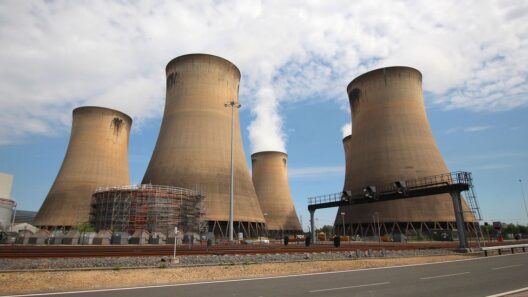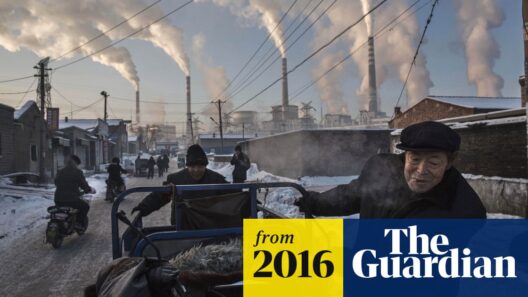Have you ever pondered how our green allies—plants—serve as nature’s guardians against the specter of global warming? While technological advancements are lauded for their capabilities, it is crucial to shine a light on nature’s intrinsic mechanisms, particularly the invaluable role that plants play in mitigating climate change. This exploration reveals the various ways plants function as natural air conditioners: cooling our environment, absorbing carbon dioxide, and fostering biodiversity, which collectively aid in combating global warming.
Firstly, let’s delve into one of the most apparent yet often overlooked functions of plants: their cooling effect on the atmosphere. Through a process known as transpiration, plants release moisture into the air from their leaves. This cooling process occurs as water evaporates, which in turn lowers surrounding temperatures. Think of a sweltering summer day in a city almost devoid of greenery; the heat can be stifling. Now imagine walking through a well-planned urban forest, where trees create a canopy, reducing ground temperatures significantly. The temperature difference can be as high as 10 degrees Fahrenheit, offering a much-needed respite from the oppressive heat. This natural air conditioning effect not only enhances our comfort but also reduces the need for energy-intensive cooling systems in buildings. Could it be that simply planting more trees would combat both the heat and our reliance on air conditioning?
The contributions of plants to climate stabilization do not end here. Perhaps the most critical aspect of their role involves the absorption of carbon dioxide (CO2), a primary greenhouse gas responsible for global warming. Through the miracle of photosynthesis, plants convert CO2 into glucose and oxygen, effectively sequestering carbon and reducing its concentration in the atmosphere. This transformative process means that a single mature tree can absorb approximately 48 pounds of CO2 annually. Imagine an entire forest doing the same—these verdant ecosystems act as substantial carbon sinks, removing excess CO2 from the atmosphere and helping to slow the rate of climate change. Thus, promoting afforestation and reforestation efforts could present us with a powerful tool against global warming.
But wait, there’s more to the narrative. Plants do not work in isolation. They are integral to maintaining biodiversity, which itself is crucial for climate resilience. Ecosystems comprising diverse plant species can better withstand climatic shifts and disturbances. A biodiverse plant community can enhance soil health, improve water retention, and promote a balanced ecosystem that supports various life forms. For instance, the interdependence between plants and pollinators, such as bees, ensures that not only do we have food security, but also that these plant species can flourish, continuing their noble work of CO2 absorption. In contrast, monocultures or ecosystems diminished by harmful practices are more vulnerable to pests and diseases, exacerbating climate-related challenges.
The intrinsic connection between plants and water management cannot be overstated either. Plants play a pivotal role in the hydrological cycle. Through transpiration and their root systems, they help retain water within ecosystems, which could otherwise be lost to evaporation. Wetlands, forests, and grasslands, rich in flora, act as natural sponges, absorbing rainfall and mitigating flood risks. This not only sustains local environments but also protects human settlements from the increasingly erratic weather patterns that are becoming the norm in our changing climate. Hence, investing in the preservation of these plant-rich ecosystems is not merely an environmental decision but also a pragmatic approach to disaster risk reduction.
Let’s now consider the challenge of urbanization. As cities expand, the green cover diminishes, leading to what is often termed an “urban heat island” effect. This phenomenon exacerbates temperatures in metropolitan areas, creating a vicious cycle of increased energy consumption and greenhouse gas emissions. Nonetheless, integrating green spaces into urban planning can be a vital antidote. Urban forestry, green roofs, and vertical gardens are innovative strategies that allow cities to harness the natural air conditioning capabilities of plants even in densely populated areas. The question remains: how can we reimagine our urban landscapes to incorporate more greenery, restoring the equilibrium lost to rampant development?
Moreover, the preservation of native plant species becomes ever more critical in the face of climate change. Native flora, adapted to local environmental conditions, not only thrive better but also provide habitat and sustenance for local fauna, helping maintain biodiversity and ecological balance. Conservation efforts aimed at protecting these species contribute significantly to sustainable ecosystems, showing that a return to those roots is essential for a viable future.
As we contemplate the significant roles plants play in combating global warming, it’s evident that they truly are our allies in this fight. From cooling the atmosphere and sequestering carbon, to preserving biodiversity and managing water resources, plants lay a multifaceted foundation for a sustainable future. The pressing challenge lies in acknowledging this connection and actively promoting policies that protect and enhance plant life. Could a greener tomorrow hold the key to lessening the harsh realities of climate change? The answer is undoubtedly rooted in the nurturing of our natural world.
In conclusion, as stewards of the Earth, we have the responsibility to embrace and promote the role of plants in our ecosystem. Strategies to support this initiative could include reforestation efforts, supporting indigenous flora, and encouraging urban greening programs. After all, it’s high time we recognize that plants, our natural air conditioners, are more than just a backdrop to our existence—they are essential partners in our quest against global warming.







